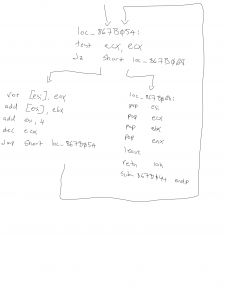In a extreme rebuke of one of many largest suppliers of HTTPS credentials, Google Chrome builders introduced plans to drastically limit transport layer safety certificates offered by Symantec-owned issuers following the invention they’ve allegedly mis-issued greater than 30,000 certificates.
Chrome plans to cease recognizing the prolonged validation standing of all certificates issued by Symantec-owned certificates authorities, Ryan Sleevi, a software program engineer on the Google Chrome group, stated in a web-based discussion board. Prolonged validation certificates are supposed to supply enhanced assurances of a website’s authenticity by displaying the identify of the validated area identify holder within the tackle bar. Below the transfer introduced by Sleevi, Chrome will instantly cease displaying that data for a interval of no less than a 12 months. In impact, the certificates might be downgraded to less-secure domain-validated certificates.
Extra steadily, Google plans to replace Chrome to successfully nullify all at the moment legitimate certificates issued by Symantec-owned CAs. With Symantec certificates representing greater than 30 % of the Web’s legitimate certificates by quantity in 2015, the transfer has the potential to stop tens of millions of Chrome customers from with the ability to entry giant numbers of websites. What’s extra, Sleevi cited Firefox information that confirmed Symantec-issued certificates are answerable for 42 % of all certificates validations. To reduce the possibilities of disruption, Chrome will stagger the mass nullification in a approach that requires they get replaced over time. To do that, Chrome will steadily lower the “most age” of Symantec-issued certificates over a collection of releases. Chrome 59 will restrict the expiration to not more than 33 months after they had been issued. By Chrome 64, validity could be restricted to 9 months.
Announcement is just the most recent growth in Google’s 18-month critique of practices by Symantec issuers. In October 2015, Symantec fired an undisclosed variety of workers answerable for issuing check certificates for third-party domains with out the permission of the area holders. One of many extended-validation certificates coated google.com and www.google.com and would have given the particular person possessing it the flexibility to cryptographically impersonate these two addresses. A month later, Google pressured Symantec into performing a expensive audit of its certificates issuance course of after discovering the mis-issuances went nicely past what Symantec had first revealed.
In January 2017, an unbiased safety researcher unearthed proof that Symantec improperly issued 108 new certificates. Thursday’s announcement got here after Google’s investigation revealed that over a span of years, Symantec CAs have improperly issued greater than 30,000 certificates. Such mis-issued certificates symbolize a probably important menace to nearly all the Web inhabitants as a result of they make it attainable for the holders to cryptographically impersonate the affected websites and monitor communications despatched to and from the legit servers. They’re a serious violation of the so-called baseline necessities that main browser makers impose of CAs as a situation of being trusted by main browsers.
Mr. Sleevi wrote:
As captured in Chrome’s Root Certificate Policy, root certificate authorities are expected to perform a number of critical functions commensurate with the trust granted to them. This includes properly ensuring that domain control validation is performed for server certificates, to audit logs frequently for evidence of unauthorized issuance, and to protect their infrastructure in order to minimize the ability for the issuance of fraudulent certs.
On the basis of the details publicly provided by Symantec, we do not believe that they have properly upheld these principles, and as such, have created significant risk for Google Chrome users. Symantec allowed at least four parties access to their infrastructure in a way to cause certificate issuance, did not sufficiently oversee these capabilities as required and expected, and when presented with evidence of these organizations’ failure to abide to the appropriate standard of care, failed to disclose such information in a timely manner or to identify the significance of the issues reported to them.
These issues, and the corresponding failure of appropriate oversight, spanned a period of several years, and were trivially identifiable from the information publicly available or that Symantec shared.
The full disclosure of these issues has taken more than a month. Symantec has failed to provide timely updates to the community regarding these issues. Despite having knowledge of these issues, Symantec has repeatedly failed to proactively disclose them. Further, even after issues have become public, Symantec failed to provide the information that the community required to assess the significance of these issues until they had been specifically questioned. The proposed remediation steps offered by Symantec have involved relying on known-problematic information or using practices insufficient to provide the level of assurance required under the Baseline Requirements and expected by the Chrome Root CA Policy.
Symantec officials released an email statement:
As the world’s leading cyber security company and the market leading Certificate Authority, we understand the importance of the trust chain we provide for our customers and everyone who uses the Internet. We learned of Google’s proposal when they posted it on their blog today. Their communication was unexpected and their proposed action is irresponsible. Our SSL/TLS certificate customers and partners need to know that this does not require any action at this time.
Symantec’s repeated violations underscore one of many issues Google and others have in imposing phrases of the baseline necessities. When violations are carried out by issuers with a sufficiently big market share they’re thought-about too huge to fail. If Google had been to nullify all the Symantec-issued certificates in a single day, it would trigger widespread outages. The penalties outlined by Sleevi appear to be aimed toward minimizing such disruptions whereas nonetheless exacting a significant punishment.
The penalties instantly revoke solely the standing of prolonged validation certificates issued by Symantec, a transfer that’s more likely to be a serious annoyance to many Symantec prospects and their web site guests, however not make websites unavailable. The untrusting of all Symantec certificates, in the meantime, has a a lot increased potential of making Web-wide issues.
As Sleevi defined it: “By phasing such adjustments in over a collection of releases, we goal to attenuate the affect any given launch poses, whereas nonetheless frequently making progress in the direction of restoring the mandatory degree of safety to make sure Symantec-issued certificates are as reliable as certificates from different CAs.”
Update: Symantec has released additional information on their Blog.
Our customers don’t have to worry about the SSL issues you see above. We have always used Comodo SSL certificates.


